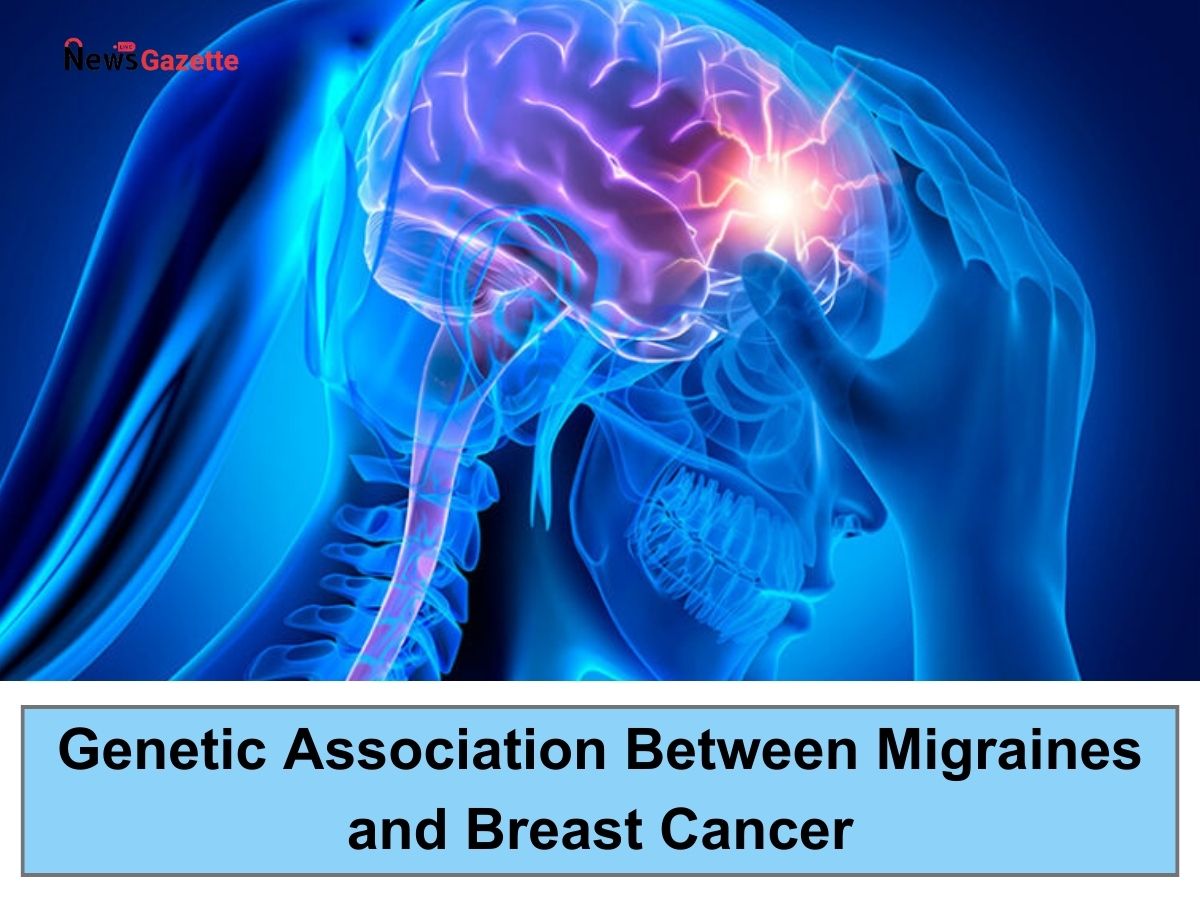
Genetic Association Between Migraines and Breast Cancer
Characterized by throbbing pain localized to a specific area of the cranium, migraine is a neurological disorder often accompanied by photosensitivity, nausea, intolerance towards sound and movement, etc. Although the condition is not considered dangerous, the prevalence of the disease cannot be ignored. Ranked third on the list of the most common health conditions, one out of every seven individuals are affected globally. Despite its non-life-threatening nature, scientists were invested in the condition due to the significant overlap in migraine incidences with that of the population suffering from other ailments like dementia, cardiovascular disease, potentially cancer, etc. Migraines are often a common side-effect associated with cancer treatment; however, recent studies hypothesized a correlation between the onset of attack and the likelihood of breast cancer.
Historically, various medical agencies observed an association between migraine onset and breast cancer incidences. However, with women suffering migraines three times more often than men, the overlap appeared as a coincidence. The Nurses’ Health Study, an organization dedicated to investigating risk factors involved in major chronic diseases in women, first established a study population in 1989. 116 430 U.S. nurses between the ages of 25 and 42 years were routinely evaluated based on their reproductive and neurological health. The pooled analysis of data collected every two years was unable to associate migraines with breast cancer risk; however, an inverse relation between the two was observed in the case-control studies. Though the data appeared conclusive, they could not satisfy the medical sector.
Subsequent research on migraines and their classification provided researchers with a new insight. Based on the presence or absence of an aura, migraines can be broadly classified into two main categories: with aura (MA) and without aura (MO). Furthermore, the age of onset was also analyzed. A paper analyzing cancer risk factors showed that specific patterns of migraine history were associated with estrogen receptors (ER). Women with an early onset of migraine showed a 50% lower risk of ER-positive breast cancer, while the presence of an aura would lower the risk to 30%. A lower risk factor in ER+ breast cancer was associated with early onset migraine. The Sister study in the United States and Puerto Rico analyzed the hereditary aspects of the conditions and their association. The two key findings of the study were that a subtype of migraine that was timed to the menstrual cycle, menstrually-related migraine, and nonmenstrually-related migraine, had increased risk. In contrast, menstrually-related migraines showed a decreased risk for ER-/PR- -cancer.
Read Also: MDMA Aided Therapy: A New Strategy Against PTSD
A recent publication of BMC Cancer further uncovered the genetic link between migraines and breast cancer using Mendelian randomization (MR) analysis. A two-sample MR study used datasets from genome-wide association studies on the European population. Statistical data stored in the Breast Cancer Association Consortium (BCAC) were analyzed for genomic contents in the MA and MO groups. One of the variables assessed was single nucleotide polymorphism (SNP). SNPs were screened for their disease association, allelic frequency, and causative relationship. The effect of migraine type on breast cancer for each SNP was quantified using the Wald ratio. The structured three-step process showed an increase in hereditary migraine was correlated with an increased risk of ER+ breast cancer. While no discernible effect of the ER- variant was observed, initial adjustment for the false discovery rate (FDR) proved migraine to be a significant risk factor for overall breast cancer. An increase in the MO subtype was associated with a substantial rise in ER- breast cancer risk with a marginal increase in overall breast cancer. Several SNPs detected are yet to be analyzed for their potential influence.

Carae Wagner specializes in reporting on the healthcare sector, with a specific emphasis on digital health, gene therapy, viral vectors, and public policy. She holds degrees in English and Psychology from the University of Virginia. Her writing has been featured in publications such as Forbes, Slate, C-Ville Weekly, and various others. She maintains a focus on anxiety disorders and depression and aims to explore other areas of mental health including dissociative disorders such as maladaptive daydreaming.
